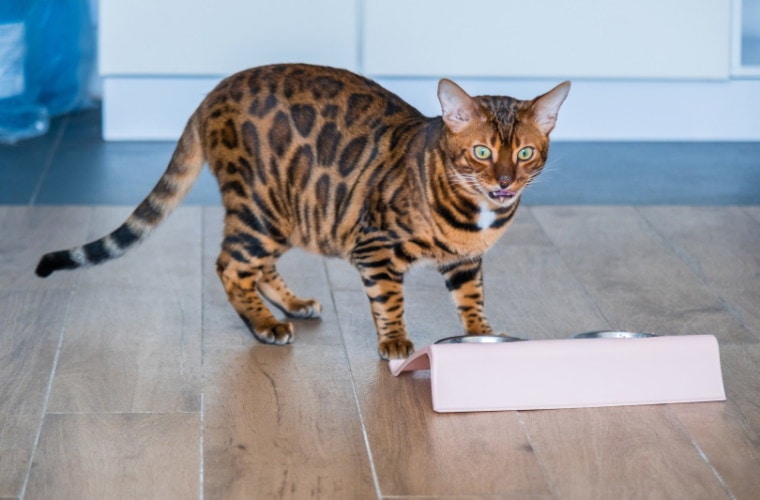
Bengal cats are a unique breed. Their coats are lovely and spotted, making them coveted by many. They are athletic, strong, and graceful, which provides plenty of energy to explore and get up to some harmless mischief.
Still, there is so much more to the Bengal cat breed than their looks or physical abilities. It is renowned for being affectionate and makes a great companion for families, children, and other pets. They are keenly intelligent and easy to train and require low-maintenance grooming due to their special coat.
This article will look at facts about the Bengal cat’s health, personality, and prevalence. If you are curious to learn more beyond the surface level of the Bengal cat, keep reading!
Click to Skip Ahead
Top 2 Health Bengal Cat Facts:
1. 71% of Bengal cats in Poland Suffer from Cataracts
A study conducted in Poland found that Bengal cats may be at higher risk of developing cataracts later in life. Out of the cats tested, nearly three-quarters of them were found to have some variation of cataracts. Only 29% were determined to have no trace of cataracts.
It is believed that this genetic predisposition is not limited to the Bengal cats of Poland. Related studies with similar results occurred in France and Sweden, suggesting that the hereditary issue may be subject to the entire breed. For that reason, the researchers behind the study insist that Bengal breeders should perform a clinical examination of their Bengal cats before breeding them.
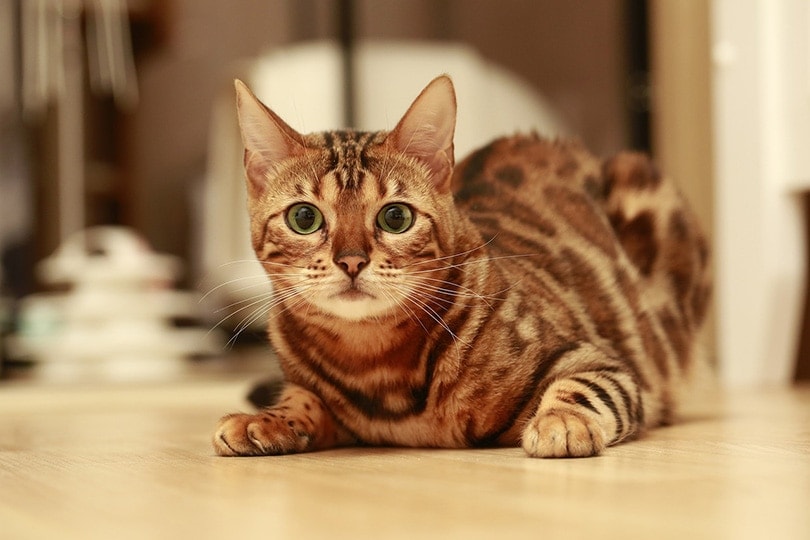
2. Lymphoma is the Most Common Health Condition in Bengal cats.
According to APSCA Pet Health Insurance, the number one pet insurance claim they see for Bengal cats is lymphoma: a cancer that attacks the lymphocytes (white blood cells). This significantly damages the immune system, as the white blood cells that help to maintain your cat’s immunity are under attack.
The other top insurance claims for Bengal cats include ear infections, pink eye, significant weight loss, feline interstitial cystitis (FIC), urinary stones, and stomach problems.
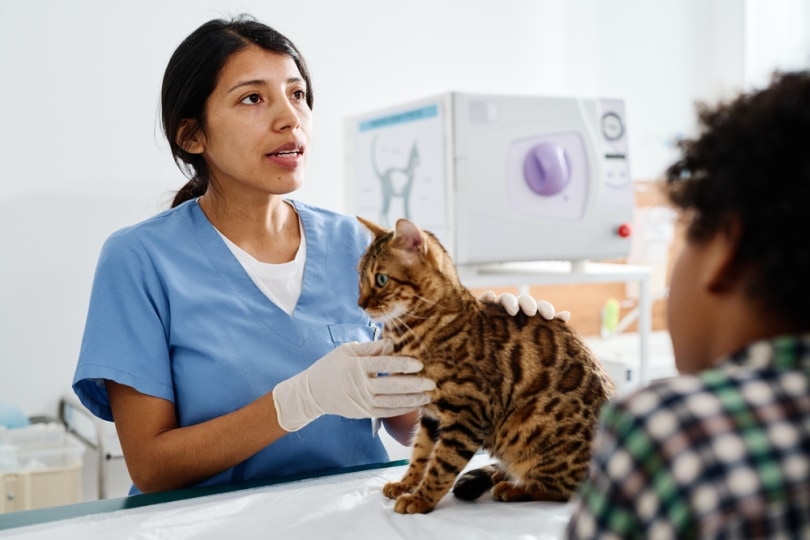
Top 3 Personality Bengal Cat Facts:
3. Bengals Are Social Cats.
Part of the Bengal cat’s charm is its desire for companionship. Bengal cats are known for their affectionate disposition and are always eager to be around those they consider their family. They are loving, devoted friends that will easily accept new pets into the household as long as they are introduced properly.
Bengals are active and frisky and enjoy seeking entertainment from their owners. Not only do they love to play, but they also love to play with others. They enjoy engaging others in games and learning fun tricks. Even when settling down from their energetic playtime, they will still want to be curled up beside you.
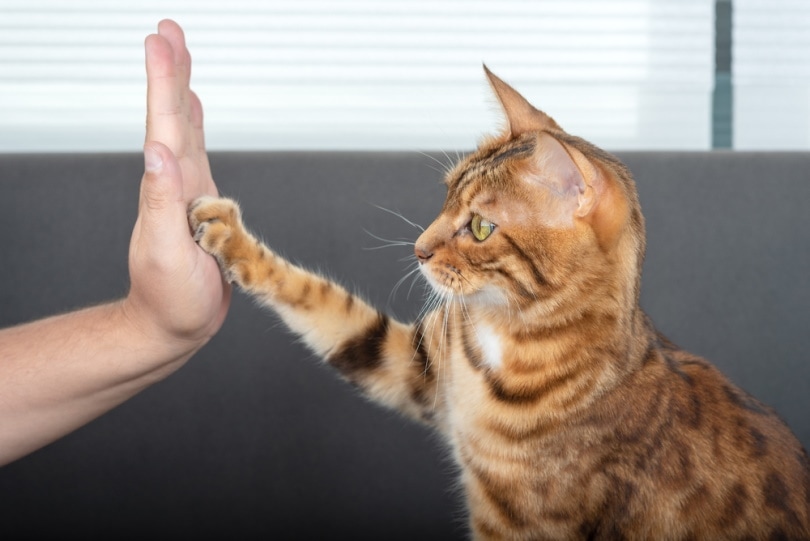
4. Bengals Love Water.
Although one of the most commonly known stereotypes about cats is that they hate water, the truth is that Bengal cats love it. It is likely because their ancestor, the Asian Leopard cat, is also not shy of water. Bengal cat owners have reported that their cats will often join them in the shower when they can!
Since Bengals are not deterred by water, keeping fish tanks away from them will be essential. They have a strong predator instinct and will not hesitate to try and get their paws on a tasty-looking fish.
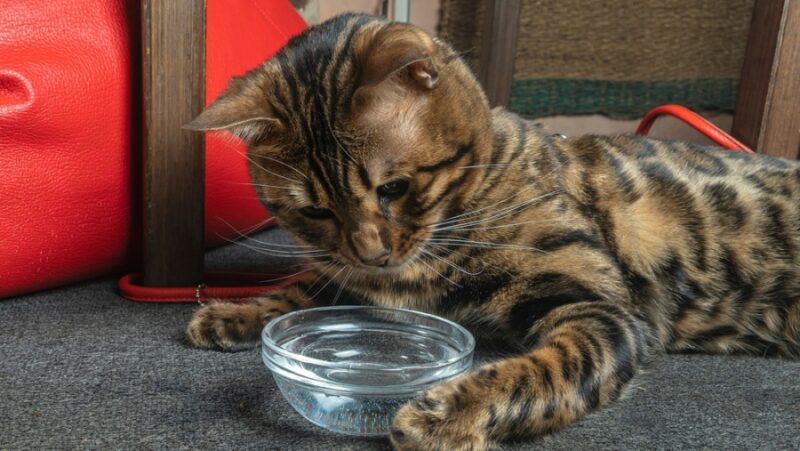
5. Bengal Cats Can Be Excellent Emotional Support Cats.
According to ESA Doctors, the Bengal cat is the best choice for an emotional support animal.
It possesses qualities many look for in an emotional support animal, such as affection and liveliness. Bengal cats love to snuggle with their owners, and they give their owners plenty of time to soothe themselves.
For those who want to be distracted, pet interaction is a must. Thankfully, the Bengal’s energetic personality leads to plenty of interaction, as the cat always wants to play with its owner.

Top 6 Prevalence Bengal Cat Facts:
6. Jean Mill Is Believed to have Bred the First Bengal Cat.
The first Bengal cat ever recorded is attributed to Jean Mill, a breeder based in California. In 1963, she crossed an Asian Leopard cat with a domestic shorthair cat.
This crossbreeding resulted in the Bengal cat breed. Since the first Bengal was first introduced in the early 1960s, the Bengal breed is relatively young compared to other species.
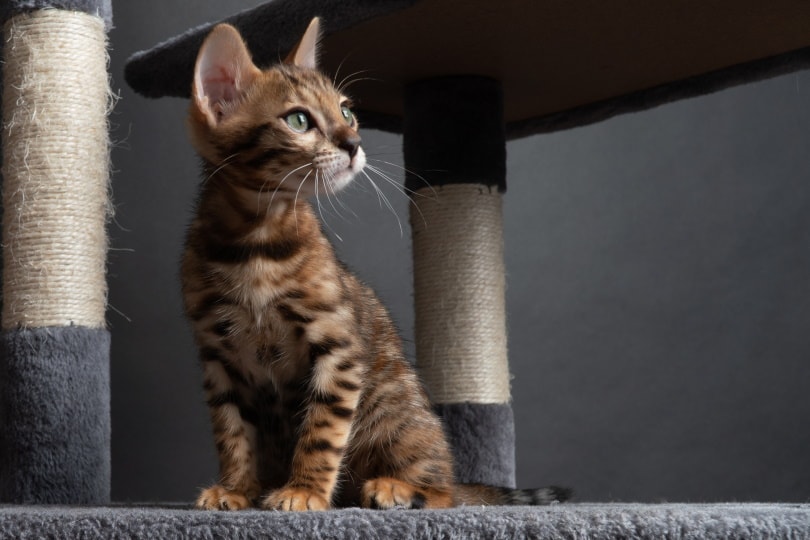
7. Bengals Are the Most Popular Cat in the United Kingdom.
Among cat owners in the United Kingdom, the Bengal is heralded as the most popular cat breed. It is likely due to the unique coloration and patterning of the breed’s coat. Only 10% of people said they did not like the breed, while 21% reported being neutral.
Not only is it the most popular in the region, but it is also the most well-known cat breed; 77% of people in the United Kingdom have reported having familiarity with the breed.
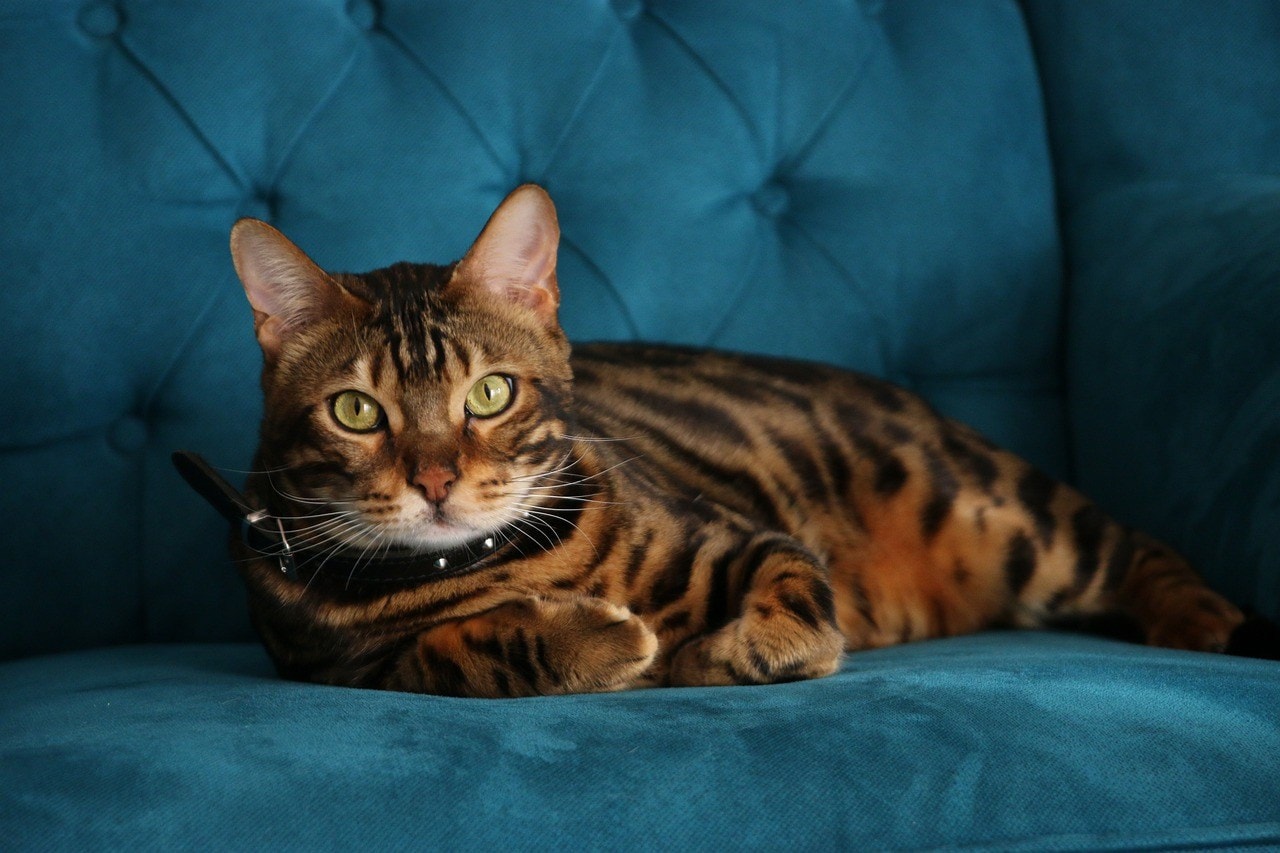
8. There Are More than 60,000 Registered Bengal Cats.
Bengal cats were officially recognized as a breed in 1986, nearly 20 years after they were introduced to the world. They gained championship status in 1991, setting the ball rolling for their popularity to soar.
As Bengals rose in popularity, it was only natural that the number of officially registered Bengals would grow higher. Currently, over 60,000 Bengal cats are registered with The International Cat Association (TICA), making them one of the organization’s most commonly displayed cat breeds.
As of 2019, there were over 2000 registered catteries for Bengal breeding, and the number of registered Bengal cats will not decrease any time soon.
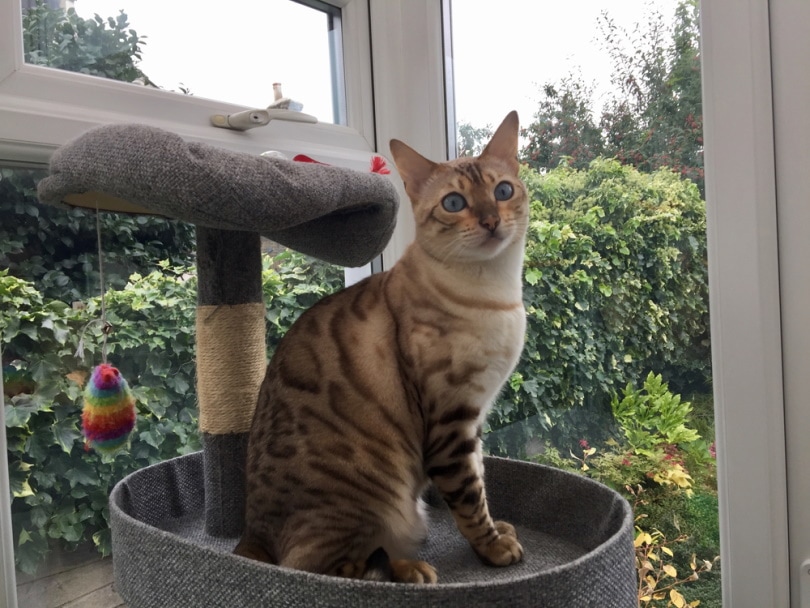
9. Bengal Cats Are Not Named After the Bengal Tiger.
Does that surprise you? Even though the Bengal cat and the Bengal tiger have similar names, the Bengal’s name is not related to the tiger. Instead, the cat is named after the Asian Leopard cat, its ancestor.
The name is inspired by the Latin version of the Asian Leopard cat’s name, Prionailurus bengalensis.
10. Bengal Cats Can Be Incredibly Expensive
Several factors can influence the price of a cat, including sex, the color of the coat, breeder’s reputation, and of course, the breed itself. For Bengals, the price tag is a little higher than most.
Due to the Bengal’s beautiful coat, the price of a well-bred Bengal cat can spike up to $25,000, but some can be priced even higher than that. Of course, not all Bengal cats will cost so much, and healthy Bengals can be found at a more affordable price. Still, the Bengal is overall a relatively expensive breed.

11. Bengal Cats Are Illegal in Several Places in the United States
Why is the Bengal cat banned in some regions?
Some consider the Bengal to be a more aggressive breed than others, though there is not much evidence to support the claim. Places in America that place restrictions on Bengal cats include New York, Georgia, Hawaii, Iowa, Alaska, Delaware, Connecticut, Seattle, Indiana, Colorado, and California.
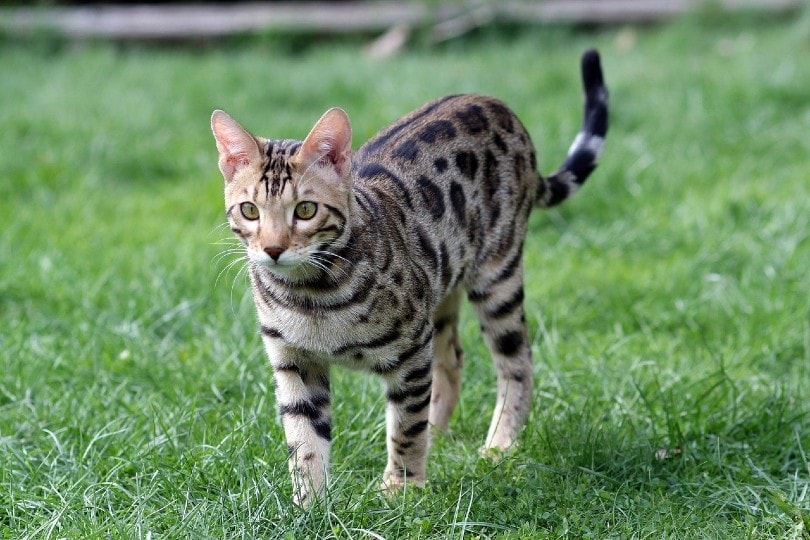
Bengal Cat FAQs
How Long Do Bengal Cats Live?
On average, Bengal cats can live anywhere from 12 to 16 years long. This is a relatively normal lifespan for a cat. Naturally, if your Bengal cat receives quality care and attention, your cat may live a longer, happier life.
How Big Are Bengal Cats?
Bengal are medium to large cats. Their height can range an average of about 13–16 inches tall, while they may weigh anywhere from 8–15 pounds.
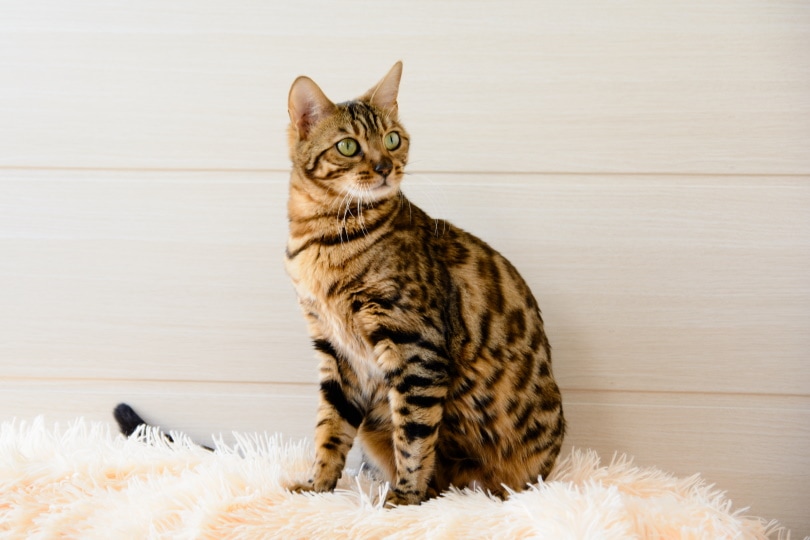
Do Bengal Cats Shed?
Technically, Bengal cats do shed. However, their shedding is so minimal that many people do not notice it. When compared to other breeds, the amount they shed is almost nonexistent.
However, Bengal cats should be brushed regularly to maintain a healthy coat.
How to Care for a Bengal Cat?
Like any cat, Bengals require a healthy diet, dental maintenance, and regular nail trimming.
Since Bengals are incredibly adventurous, they will need plenty of toys to keep them occupied and space to explore. Puzzle toys will help to keep them busy, and a cat tree will satisfy their need for climbing.
Conclusion
There is a lot to love about the beautiful Bengal cat, such as their glowing personalities, their wild ancestry, and their fondness for humans. Their uniqueness is seen in their spotted coat as much as in their quirky water obsession.
For a relatively new cat breed, they have swiftly taken the spotlight, making them a coveted cat for many. Only time will tell if the species continues to grow in influence and popularity, but in the meantime, Bengals can be enjoyed and loved just as they are.
Featured Image Credit: Photo_Olivia, Shutterstock









